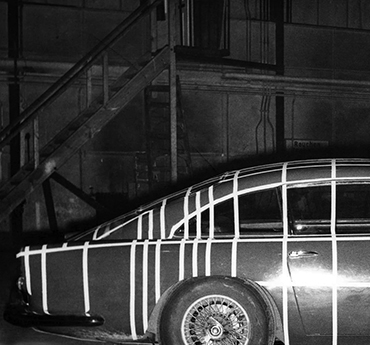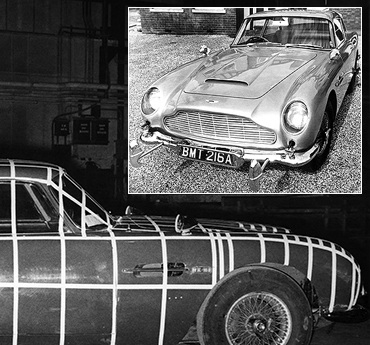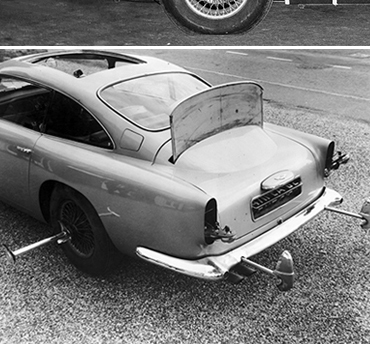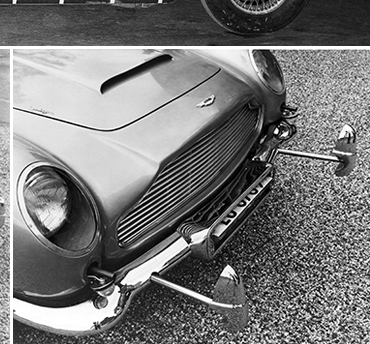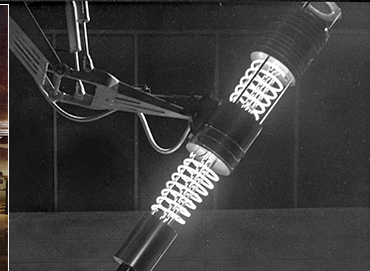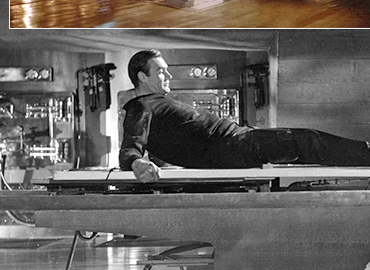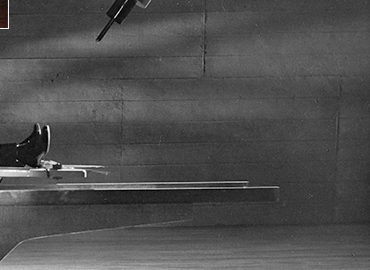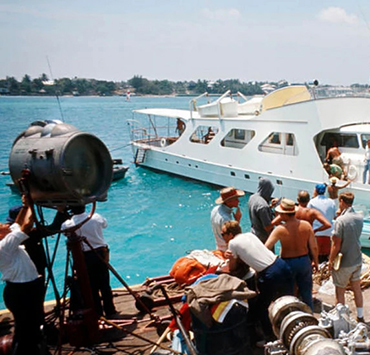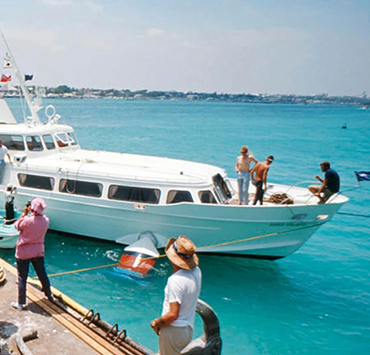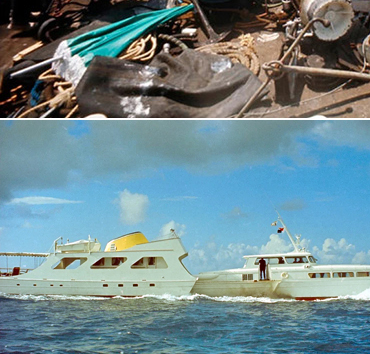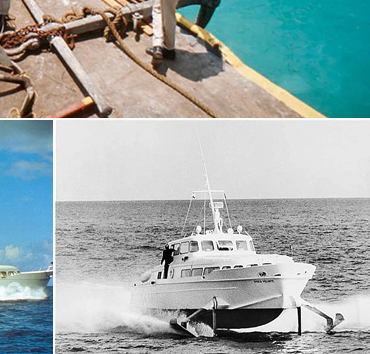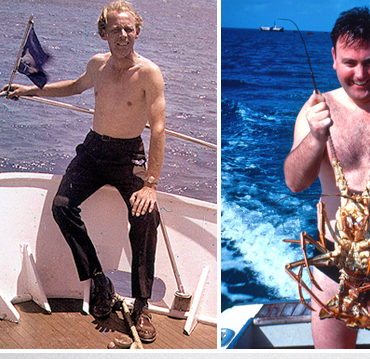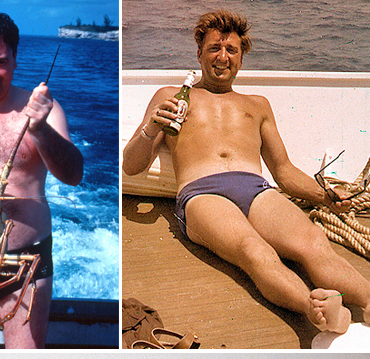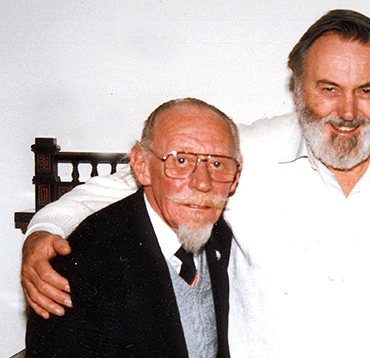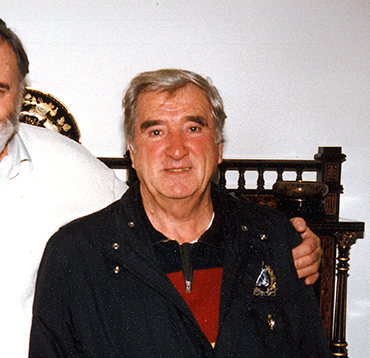|
 |
From the Archive
007 Issue #13 (1983) |
|
|
|
|
 |
|
One of the main
‘stars’ of the film Goldfinger (1964) was undoubtedly the Aston
Martin DB5. Did the idea for the gadget car originate from ‘Cubby’, and was
it possible to actually build a car that housed all those gadgets?
The Aston Martin was scripted from the word go. We had a long discussion
with Ken Adam about it, and Ken came up with some schemes, I came up with
some schemes, and I went to Aston Martin and told them what I wanted to do
and they told me I was crazy. They said I’d never do it but they gave me
their prototype DB5 and I took it back to Pinewood and started cutting it
up. All the things you see in the car were real, they worked. With the
ejector seat we didn’t use real rockets, we used compressed air, but we
could have done. |
|
|
|
So Aston Martin
weren’t too keen on your modifications?
Well, you can say they weren’t very happy, but at the end of it they built
four of their own ‘Bond’ cars with all my gadgets and did a world
publicity tour.
What made the laser sequence in Goldfinger so impressive and
more realistic was the way the beam actually appeared to be cutting
through solid gold with a tongue of flame moving in line with the beam.
How was this effect achieved?
I built a rig underneath the table that travelled very slowly, and also
built a special jet so that I could obtain a long pointed flame that was
totally controllable and used sheets of brass for the gold, overlaid with
lead painted gold, and synchronised the laser to move in line with the
flame. The laser beam was matted in later. |
|
|
|
Presumably effects like Oddjob’s hat throwing were done with wires?
Yes, that was quite a tricky piece of mechanics.
How did the jet-pack come to be used in Thunderball (1965)?
I always try to be up to date with new technology as much as I can be, and
if we came across anything that was unusual or out of the ordinary that
would resolve a situation in the films we would try to get hold of it –
and more often than not we did. |
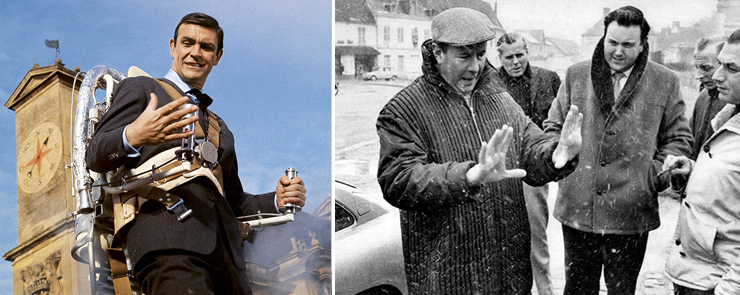 |
|
ABOVE: (left) Sean
Connery wearing the lightweight prop version of the Bell-Textron
jet-pack (built by Bert Luxford) on location at Château
d'Anet near Paris during the filming of Thunderball (1965).
(right) Director Terence Young watched by [L-R] Producer Kevin
McClory, John Stears, Special Effects technician Bert Luxford and
Production Designer Ken Adam. |
|
|
|
I believe one of the larger models of the Vulcan bomber used in
Thunderball was almost full scale?
It was full scale, albeit without the wing tips that we sank. I can’t
remember the scale of the bomber that had to ditch, but yet again, you can
have a small miniature aircraft, but when the aircraft hits the water you
are going to have scale problems. But I think it worked out to something
like a 15-foot wingspan. The same size model that was seen dropping down
to the seabed.
That was an interesting thing because I had to find a location in
miniature very much akin to the area where the full-sized bomber went
down. I used to finish work on a Friday night at Pinewood, hop on a plane
out to the Bahamas, get a boat and go round all the islands for about four
weekends in a row until I eventually found a little island called Rose
Island with miniature coral etc. – and that’s what we used. |
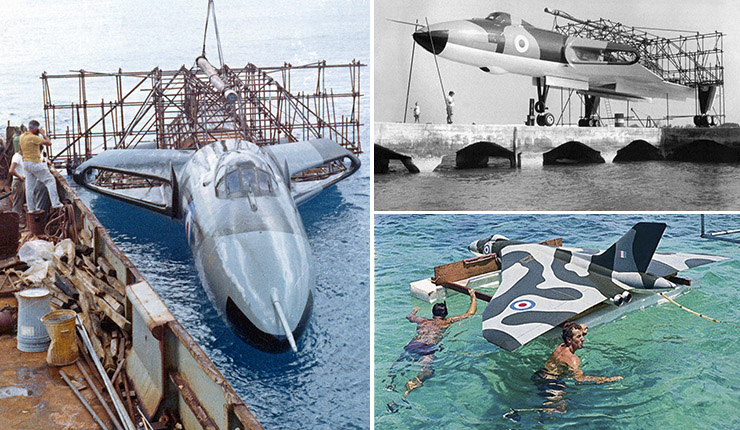 |
|
Was Largo’s yacht, the ‘Disco Volante’, a model that you blew up?
No, it was the hydrofoil used in the film, when the destroyers arrive. Now
that was a BIG explosion, that really was! I put windows out 60 miles
away. It was enormous! I was using deviants from rocket fuel at the time
that I got hold of from a friend at Cape Kennedy. When we blew it I
remember looking at the sea – there was a 50-foot deep hole in the water –
you could see the seabed! It nearly didn’t happen at all because the night
before some bright spark stole the engine exhaust manifolds, so we had to
tow the hydrofoil into position. As the smoke cleared we couldn’t believe
it – there was nothing left. We thought the explosion had vaporised the
boat and walked out on to the reef to investigate. Luckily one of my crew
looked up and saw what was left of the craft hurtling back to earth. The
force of the rocket fuel had literally blown it sky-high. Believe me,
you’ve never seen a group of men move so fast – the metal debris only just
missed us! |
|
|
|
How was the conversion
of the ‘Disco Volante’ achieved?
We got a hydrofoil, I think from one of the Italian lakes, and built the
back half to that. |
 |
|
CONTINUED |
|




